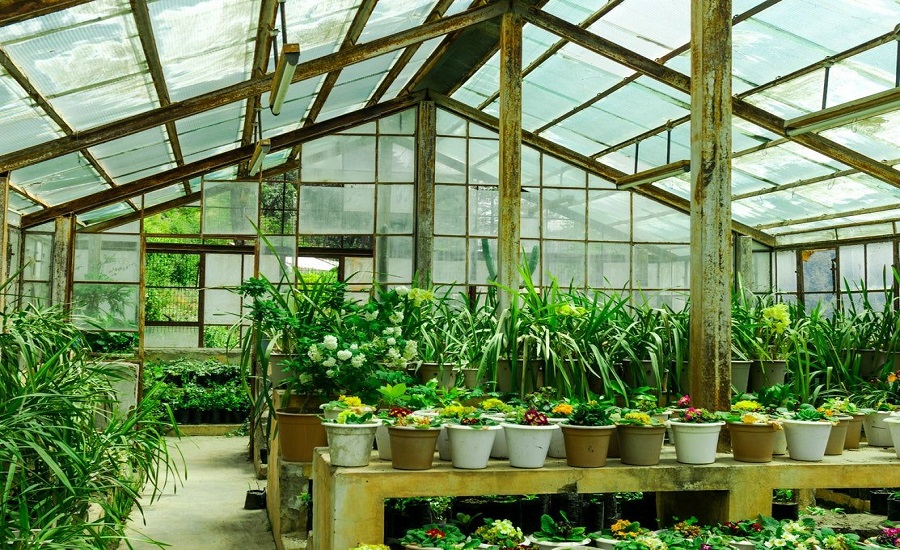The global greenhouse market is witnessing significant momentum, driven by a growing demand for sustainable agricultural practices, climate-resilient food production, and technological advancements in controlled environment agriculture. As of 2025, the market continues to expand steadily and is projected to experience substantial growth by 2032.
Get a Free Sample Report – https://www.skyquestt.com/sample-request/greenhouse-market
Greenhouses have become an essential component of modern agriculture, offering controlled environments that allow year-round cultivation of crops, regardless of external weather conditions. This is particularly important in regions affected by extreme climate, water scarcity, or limited arable land. The increasing need to boost crop yields and improve food security has accelerated the adoption of greenhouse farming worldwide.
Market Size and Growth Outlook
The greenhouse market size was valued at USD 30.1 billion in 2023 and is poised to grow from USD 33.26 billion in 2024 to USD 73.93 billion by 2032, growing at a CAGR of 10.5% during the forecast period (2025-2032). Growth is being fueled by increased investments in agritech, rising demand for organic and locally-grown produce, and government support for sustainable farming initiatives.
Key Market Drivers
Climate Change and Weather Volatility: Greenhouses offer a shield against unpredictable weather patterns, enabling farmers to maintain stable crop production throughout the year.
- Technological Innovations: The integration of smart systems—such as automated irrigation, AI-driven climate control, and IoT sensors—has significantly enhanced the efficiency and productivity of greenhouse operations.
- Urban and Vertical Farming: As urban populations grow, so does the interest in vertical and rooftop greenhouse farming, particularly in densely populated cities where traditional farming space is limited.
- Rising Demand for High-Quality Produce: Consumers are increasingly prioritizing fresh, pesticide-free, and organic food, which greenhouse farming can deliver reliably.
Make an Inquiry to Address your Specific Business Needs – https://www.skyquestt.com/speak-with-analyst/greenhouse-market
Market Segmentation
- By Type: The market is divided into glass greenhouses, plastic greenhouses, and others. Plastic greenhouses dominate due to their lower construction costs and flexibility.
- By Crop Type: Vegetables, fruits, flowers, and herbs are among the primary crops grown in greenhouses, with vegetables accounting for the largest share.
- By Technology: The market includes low-tech, medium-tech, and high-tech greenhouses. High-tech greenhouses with full automation and environmental controls are the fastest-growing segment.
Regional Insights
- North America and Europe lead in high-tech greenhouse adoption, supported by advanced infrastructure and strong R&D capabilities.
- Asia-Pacific is emerging as the fastest-growing region, driven by rapid population growth, food demand, and government incentives in countries like China, India, and Japan.
- Latin America and Africa are also witnessing growing interest, especially where traditional farming is challenged by climate conditions.
Take Action Now: Secure Your Greenhouse Market Report Today – https://www.skyquestt.com/buy-now/greenhouse-market
Top Players in Greenhouse Market
- Richel Group (France)
- Hoogendoorn (Netherlands)
- Dalsem (Netherlands)
- Harnois Greenhouses (Canada)
- Priva Holding (Netherlands)
- Ceres Greenhouse (USA)
- Certhon (Netherlands)
- Van Der Hoeven (Netherlands)
- Logiqs B.V. (Netherlands)
- Rough Brothers, Inc. (USA)
- Trinog-xs (China)
- Agra Tech, Inc. (USA)
- Heliospectra AB (Sweden)
- Argus Control Systems Limited (Canada)
- Nexus Corporation (USA)
- Signify Holding (Netherlands)
- Berry Global Group, Inc (USA)
- Beijing Kingpeng International (China)
Challenges and Restraints
Despite the promising outlook, the market faces certain barriers:
- High initial capital investment, especially for advanced systems.
- Technical know-how and maintenance requirements.
- Energy consumption in temperature-controlled environments.
Future Trends
The next decade will likely see a transformation in greenhouse agriculture:
- AI and Robotics will play a key role in automating planting, monitoring, and harvesting.
- Renewable Energy Integration will reduce operational costs and environmental impact.
- Hydroponics and Aquaponics will gain traction as resource-efficient methods within greenhouses.
- Blockchain and Supply Chain Tech may enhance transparency and traceability in greenhouse-grown produce.
Read Greenhouse Market Report Today – https://www.skyquestt.com/report/greenhouse-market
The greenhouse market is poised for strong growth through 2032, driven by the global push toward sustainable agriculture and food security. While challenges exist, ongoing innovation and increasing investment are expected to overcome them, paving the way for greenhouses to become a central pillar of future farming systems.
